Spinach is a nutrient-dense leafy green that is rich in vitamins, minerals, and antioxidants. Its versatility makes it a staple in salads, smoothies, sautés, and soups. While traditionally grown in garden beds, spinach is also perfect for container gardening, allowing gardeners to enjoy fresh, tender greens year-round, even in small spaces or urban settings.
This guide explores how to grow spinach in containers, covering everything from selecting containers and soil to planting, care, harvesting, and troubleshooting common issues.
Why Grow Spinach in Containers
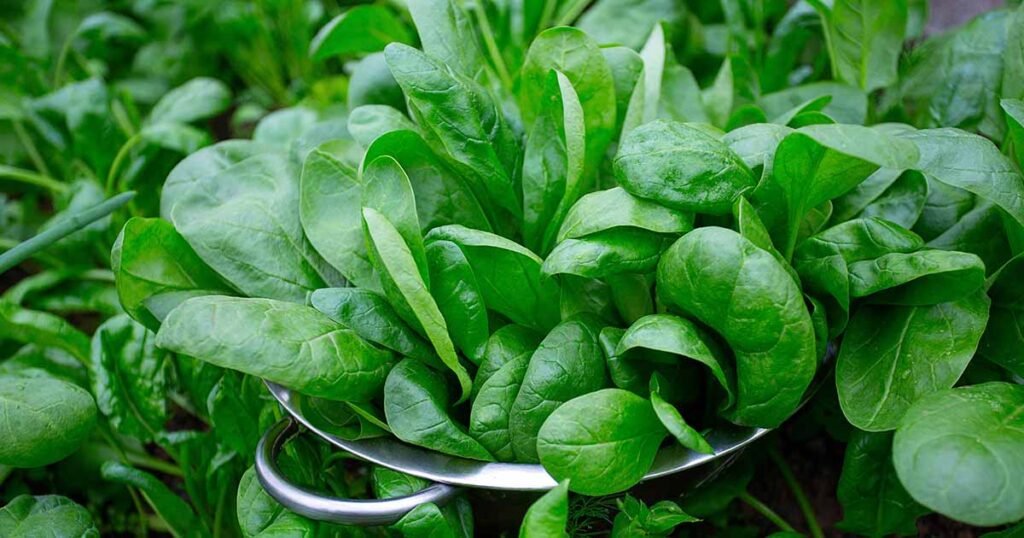
Container gardening offers several advantages for spinach:
- Space Efficiency – Ideal for balconies, patios, and small yards.
- Year-Round Growth – Spinach can be grown indoors under grow lights or outdoors during cooler months.
- Control Over Soil and Water – Containers prevent soil-borne diseases and allow better control over moisture levels.
- Ease of Harvesting – Container-grown spinach is easy to access for frequent picking.
With proper care, container spinach can provide a continuous supply of tender leaves for weeks to months.
Choosing the Right Container
Selecting the right container is crucial for healthy spinach growth:
- Size – Choose containers at least 6–8 inches deep for spinach roots. Deeper containers are better for larger yields.
- Material – Plastic, ceramic, or fabric pots are all suitable. Fabric pots provide excellent drainage and airflow to roots.
- Drainage – Ensure containers have drainage holes to prevent waterlogging, which can lead to root rot.
- Shape – Wider containers allow multiple plants per pot and better air circulation.
For small spaces, consider using window boxes, hanging baskets, or vertical planters to maximize yield.
Selecting the Right Soil
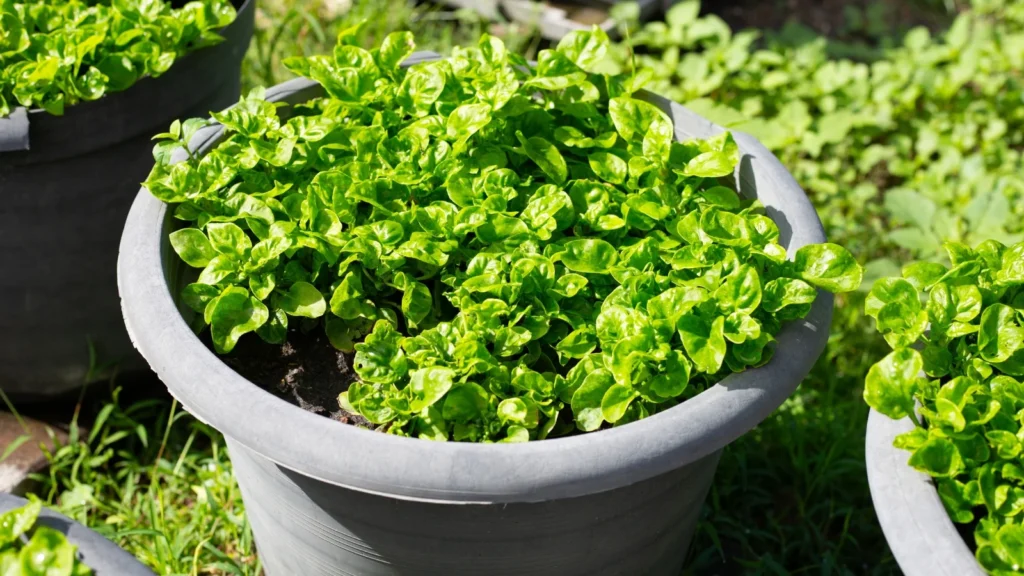
Spinach thrives in nutrient-rich, well-draining soil:
- Potting Mix – Use a high-quality potting mix rather than garden soil. Mix in compost or well-rotted manure to boost fertility.
- pH – Spinach prefers slightly acidic to neutral soil (pH 6.0–7.0).
- Aeration – Adding perlite or vermiculite improves drainage and prevents compaction.
- Moisture Retention – A soil that holds moisture without becoming soggy ensures consistent growth.
Choosing Spinach Varieties for Containers
Some spinach varieties perform better in containers than others:
- Bloomsdale Long Standing – A classic, cold-tolerant variety with tender, crinkly leaves.
- Space Spinach – Compact and ideal for small containers.
- Baby Leaf Spinach – Fast-growing, perfect for continuous harvests.
- Tyee – Heat-tolerant, suitable for warmer climates.
Select varieties based on your climate, container size, and harvest preferences.
Sowing Spinach in Containers
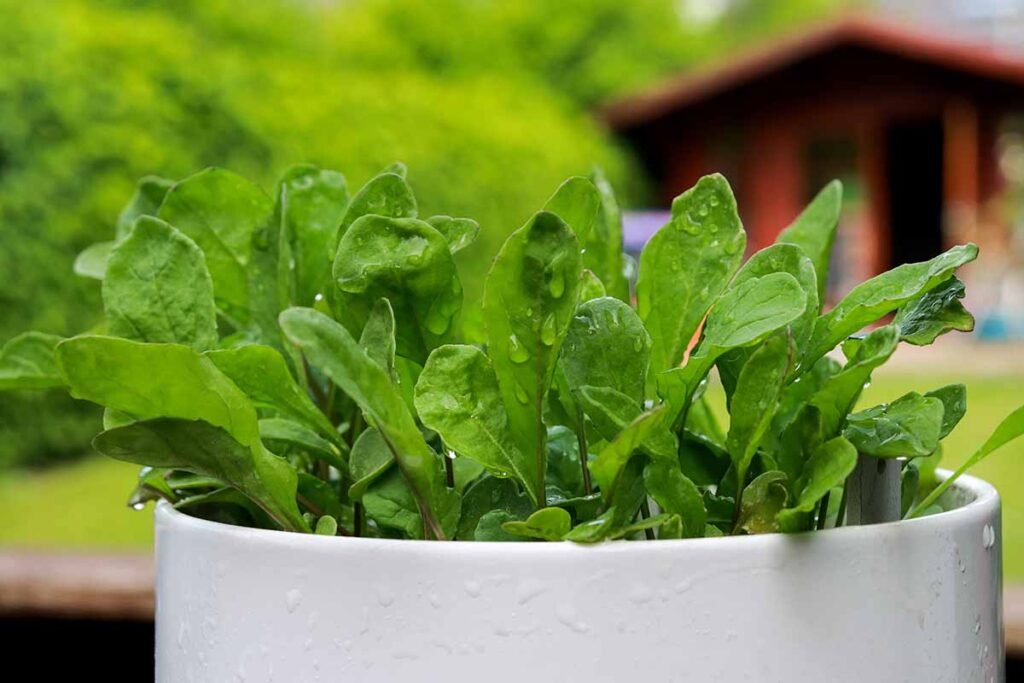
Spinach can be grown from seeds directly in containers or transplanted as seedlings.
1. Direct Seeding
- Fill the container with potting mix and level the soil.
- Sow seeds ½ inch deep, spaced 1–2 inches apart for baby greens or 3–4 inches apart for full-sized leaves.
- Water gently but thoroughly after sowing.
- Seeds typically germinate within 7–14 days under optimal conditions.
2. Transplanting Seedlings
- Start seeds in seed trays or small pots and transplant seedlings once they develop 2–3 true leaves.
- Space seedlings according to their mature size to prevent overcrowding.
Light Requirements
Spinach requires plenty of light for healthy growth:
- Outdoor Containers – Place containers in full sun for at least 4–6 hours per day. Partial shade is acceptable in hot climates to prevent bolting.
- Indoor Containers – Use a south-facing windowsill or supplement with LED grow lights for 12–14 hours daily.
Adequate light ensures lush, dark green leaves and prevents leggy growth.
Watering and Care
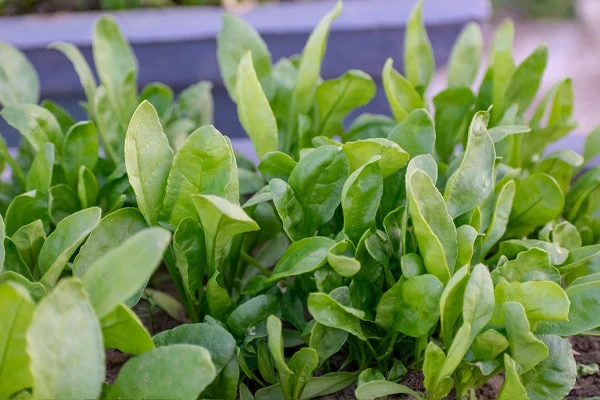
Spinach prefers consistently moist soil:
- Watering Frequency – Water containers when the top inch of soil feels dry. Avoid overwatering to prevent root rot.
- Mulching – Apply a thin layer of mulch to retain moisture and regulate temperature.
- Fertilization – Feed every 2–3 weeks with a balanced, water-soluble fertilizer. Organic options like compost tea or fish emulsion work well.
- Thinning – Thin seedlings to prevent overcrowding, which improves airflow and reduces disease risk.
Temperature and Seasonal Considerations
Spinach is a cool-season crop:
- Optimal Growth Temperature – 50–70°F (10–21°C).
- Avoid Heat – High temperatures cause bolting (premature flowering), which makes leaves bitter.
- Winter Growth – Indoor containers or cold frames can extend the growing season. Use frost cloths or insulated pots for colder climates.
Harvesting Spinach
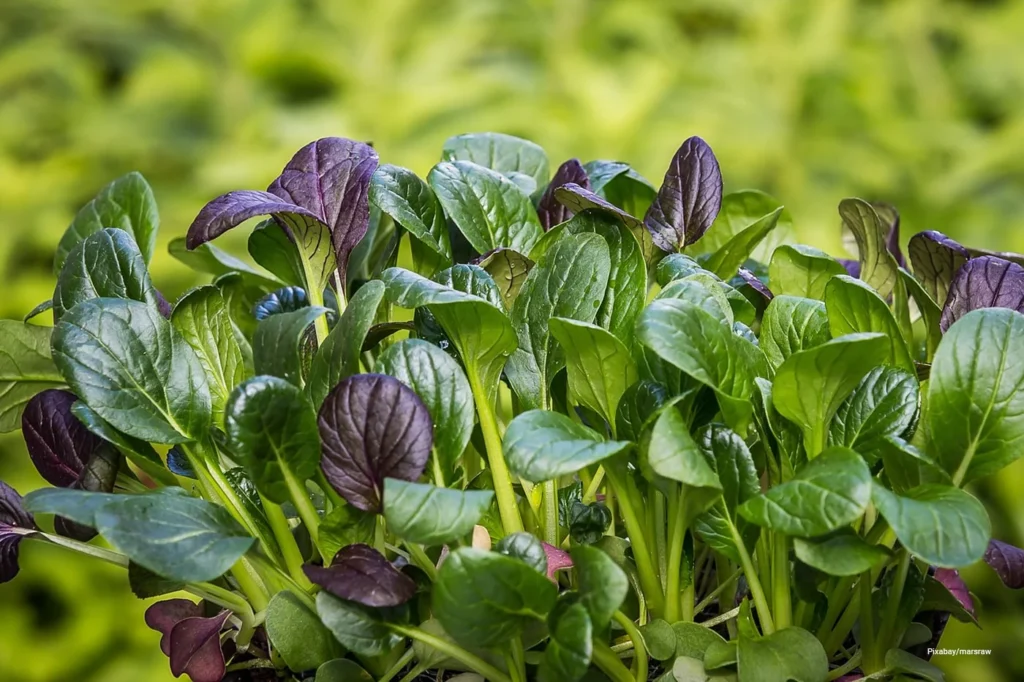
Proper harvesting encourages continuous growth:
- Baby Leaves – Pick individual leaves once they reach 2–3 inches. This method allows the plant to keep producing.
- Full-Size Leaves – Harvest larger leaves by cutting outer leaves first, leaving the central growing point intact.
- Cut-and-Come-Again – Frequent harvesting every 1–2 weeks encourages lush growth and prevents flowering.
- Avoid Flowering – Remove flower stalks immediately to prevent bitterness.
Common Pests and Diseases
Spinach containers are less prone to soil-borne diseases, but vigilance is key:
- Aphids – Spray with water or insecticidal soap.
- Leaf Miners – Remove affected leaves and cover plants with row covers.
- Downy Mildew – Ensure good air circulation and avoid wetting leaves excessively.
- Slugs and Snails – Handpick or use natural barriers like crushed eggshells.
Tips for Year-Round Spinach Production
- Succession Planting – Sow new seeds every 2–3 weeks to maintain a continuous harvest.
- Indoor Lighting – Grow lights can extend harvests in winter months.
- Container Rotation – Move containers outdoors during cool months and indoors when temperatures rise too high.
- Companion Plants – Grow spinach alongside herbs like parsley or chives to maximize container space and discourage pests.
- Regular Maintenance – Remove yellowing leaves and monitor for pests regularly to maintain plant health.
Conclusion
Growing spinach in containers is a practical, rewarding way to enjoy fresh, nutrient-rich greens year-round. With proper container selection, high-quality soil, consistent watering, and adequate sunlight, gardeners can harvest tender leaves continuously without relying on garden beds.
Both indoor and outdoor container gardening offer flexibility, allowing you to adapt to climate conditions and space constraints. By selecting the right varieties, practicing regular care, and following proper harvesting techniques, you can ensure a steady supply of fresh, flavorful spinach for salads, smoothies, sautés, and pickling.
Container-grown spinach is not only convenient but also encourages sustainable, efficient gardening. With minimal space, attention to soil and water, and strategic planting, anyone can cultivate healthy, vibrant greens at home anytime.
